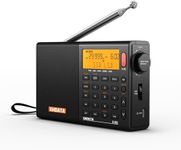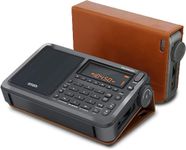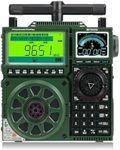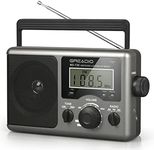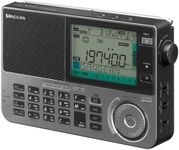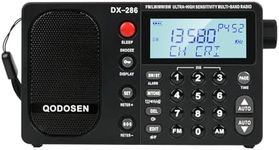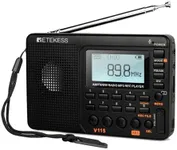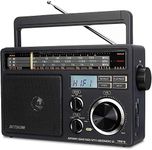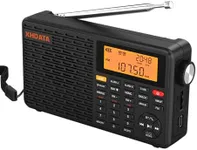Buying Guide for the Best Shortwave Radios
Choosing a shortwave radio can be a fun and rewarding experience, especially if you enjoy listening to broadcasts from around the world or want a reliable way to receive information during emergencies. The key to picking the right shortwave radio is understanding your needs—whether you want something portable for travel, a device for home listening, or a radio that can pick up the widest range of frequencies. By focusing on a few important specifications, you can find a radio that matches your listening habits and environment.Frequency CoverageFrequency coverage refers to the range of radio frequencies the device can receive. This is important because the more frequencies your radio can access, the more stations and broadcasts you can listen to. Some radios only cover basic shortwave bands, while others include AM, FM, and even longwave or weather bands. If you want to listen to a wide variety of international stations, look for a radio with broad frequency coverage. If you only need local or specific bands, a more limited range may be sufficient.
PortabilityPortability is about how easy it is to carry and use the radio on the go. Portable radios are smaller, lighter, and often battery-powered, making them ideal for travel, camping, or emergency kits. Larger tabletop models may offer better sound and more features but are best suited for home use. Think about where you plan to use your radio most often—if you need something for outdoor adventures, prioritize portability; if it will stay in one place, size and weight are less important.
Power OptionsPower options describe how the radio is powered—by batteries, AC adapter, hand crank, or solar panel. This is crucial if you plan to use the radio during power outages or in remote areas. Radios with multiple power sources offer the most flexibility. If you want a radio for emergencies, look for one with hand-crank or solar charging. For regular home use, an AC-powered model may be more convenient.
Tuning MethodTuning method refers to how you select stations—either with a digital display or an analog dial. Digital tuning is more precise and often includes features like memory presets, making it easier to find and return to your favorite stations. Analog tuning can be more traditional and may appeal to those who enjoy the classic radio experience. If you value accuracy and convenience, digital is the way to go; if you prefer simplicity, analog may suit you better.
Antenna QualityAntenna quality affects how well your radio can pick up weak or distant signals. Some radios have built-in antennas, while others allow you to attach external ones for better reception. If you live in an area with strong signals, a basic antenna may be enough. If you want to listen to faraway stations or live in a place with weak reception, look for a radio with a good built-in antenna or the option to connect an external one.
Audio QualityAudio quality is about how clear and loud the sound is from your radio. This matters if you plan to listen for long periods or want to enjoy music as well as talk broadcasts. Smaller radios may have tinny or quiet speakers, while larger models often provide richer sound. If sound quality is important to you, test the radio if possible or look for models known for good audio performance.
